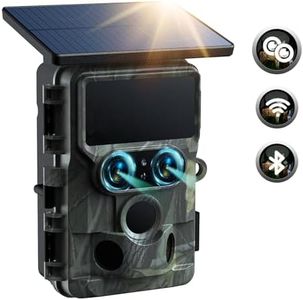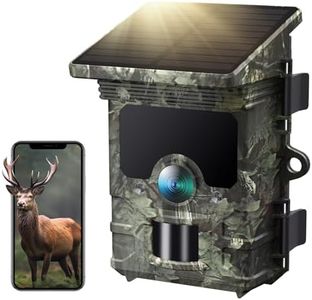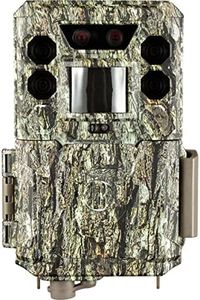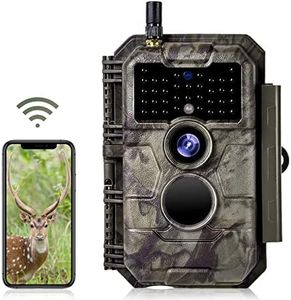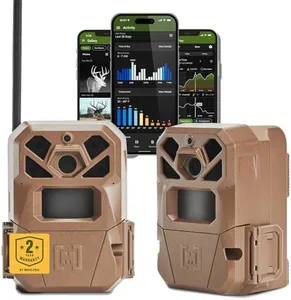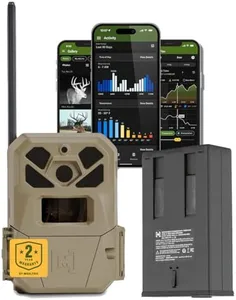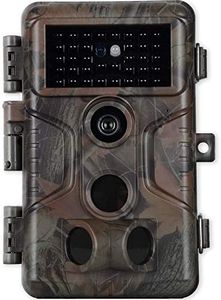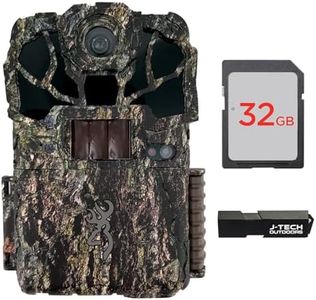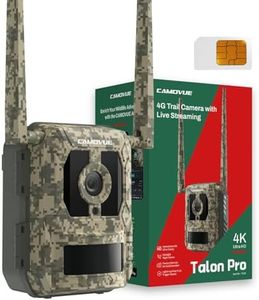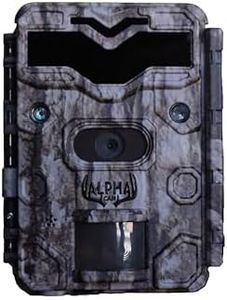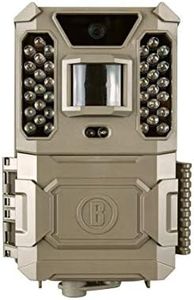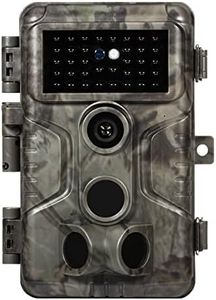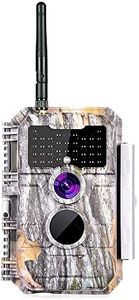We Use CookiesWe use cookies to enhance the security, performance,
functionality and for analytical and promotional activities. By continuing to browse this site you
are agreeing to our privacy policy
10 Best Cheap Trail Cameras
From leading brands and best sellers available on the web.Buying Guide for the Best Cheap Trail Cameras
Choosing a trail camera can feel overwhelming with all the features and specs, but a little understanding goes a long way. Whether you’re monitoring wildlife, securing property, or just curious about what’s happening outdoors, think about how and where you plan to use your camera. Consider what you want to capture, when you expect action, and how often you’ll check or retrieve footage. Keep in mind that trail cameras vary in image quality, detection, and how they save or send information, so finding the right balance of the basics can lead to a camera that works best for your needs.Image ResolutionImage resolution, often measured in megapixels (MP), tells you how clear and detailed the camera’s photos will be. Higher resolution means crisper and more detailed images, but files take up more space. Trail cameras range from about 5MP up to over 20MP. For general wildlife spotting or basic security, lower resolutions (5-8MP) often suffice if you just want to know what's moving around. For clearer identification or if you plan to print photos, aim for at least 10MP. Think about whether sharp photos really matter for your main use, or if a basic view will do.
Trigger SpeedTrigger speed is how fast your camera takes a photo after it detects movement. Faster trigger speeds reduce the chances of missing fast-moving animals or people. Speeds range from about half a second to less than a tenth of a second. Slow trigger speeds might only catch the tail end of an animal, while speedy ones grab the full subject. If you're monitoring trails with quick-moving wildlife or want to catch intruders, opt for a camera with faster trigger speeds. For static or slow-paced areas, a slower trigger speed may be fine.
Detection RangeDetection range is the distance at which the camera can spot movement, usually from about 30 to 100 feet. A longer detection range means the camera can pick up activity farther away, which can be helpful in open areas. In dense woods or smaller backyards, a shorter range works just as well and reduces false triggers from distant movement. Consider where you’ll place the camera, and match the range to your observation area to avoid missing activity or getting too many irrelevant shots.
Night Vision/InfraredNight vision, made possible by infrared LEDs, allows trail cameras to capture images in low light or darkness. Cameras vary in how well they light up the scene and how 'invisible' their LEDs are. More LEDs can mean brighter night images, but may be more visible to animals or people. 'No glow' cameras are virtually invisible at night, ideal for security or skittish animals. If most action happens at night, prioritize better night vision and invisibility based on your privacy or spooking concerns.
Battery LifeBattery life is how long your camera can operate before needing fresh batteries. Trail cameras can sometimes last several months, depending on settings, climate, and how often they are triggered. Cameras with efficient power usage are essential if they’ll be left unattended for long periods. If you check your camera only occasionally, seek out models known for longer life, or consider options for external power if available. For frequent check-ins, battery life may not be as crucial.
Storage CapacityStorage capacity refers to the size of the memory card the camera can use, often SD or microSD cards, and it determines how many images or videos can be saved before the camera fills up. Higher resolution and frequent triggers fill cards faster. If you don’t visit your camera regularly, or expect lots of captures, a higher capacity memory card is important. For light or infrequent use, a standard card will suffice, but always make sure your camera supports the card size you plan to use.
Weather ResistanceWeather resistance means how well the camera can handle outdoor conditions like rain, cold, and dust. Most trail cameras are built to be weatherproof, but some are better sealed and more rugged than others. If you’re using your camera in very harsh weather or remote areas, make sure it is rated for those conditions. For milder climates or short-term setups, basic protection is usually enough.
